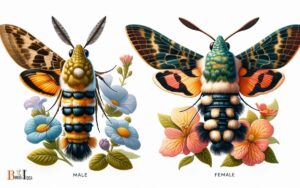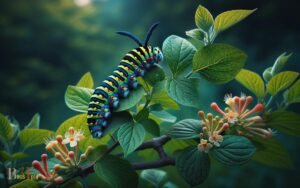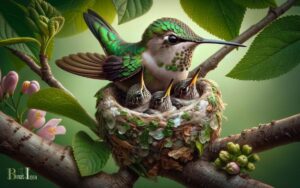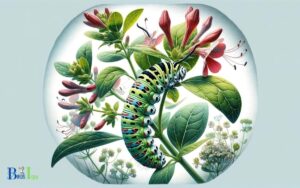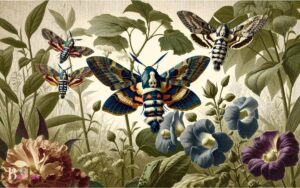Where Do Hummingbird Moths Live? Discover!
Hummingbird moths, belonging to the Sphingidae family, are found in a variety of habitats across the globe.
They inhabit diverse environments ranging from gardens and meadows to woodlands and open fields.
These moths are particularly drawn to areas abundant in nectar-rich flowers, which serve as their primary food source.
Urban environments, including parks and residential gardens, are also common habitats for hummingbird moths, showcasing their adaptability to human-altered landscapes.
Their presence is not restricted to specific geographic regions, as they are distributed globally.
The moths are often seen hovering around flowers, especially those with tubular shapes, which facilitate their feeding behavior.
Additionally, their habitat preferences may vary seasonally based on factors such as temperature and flowering patterns.
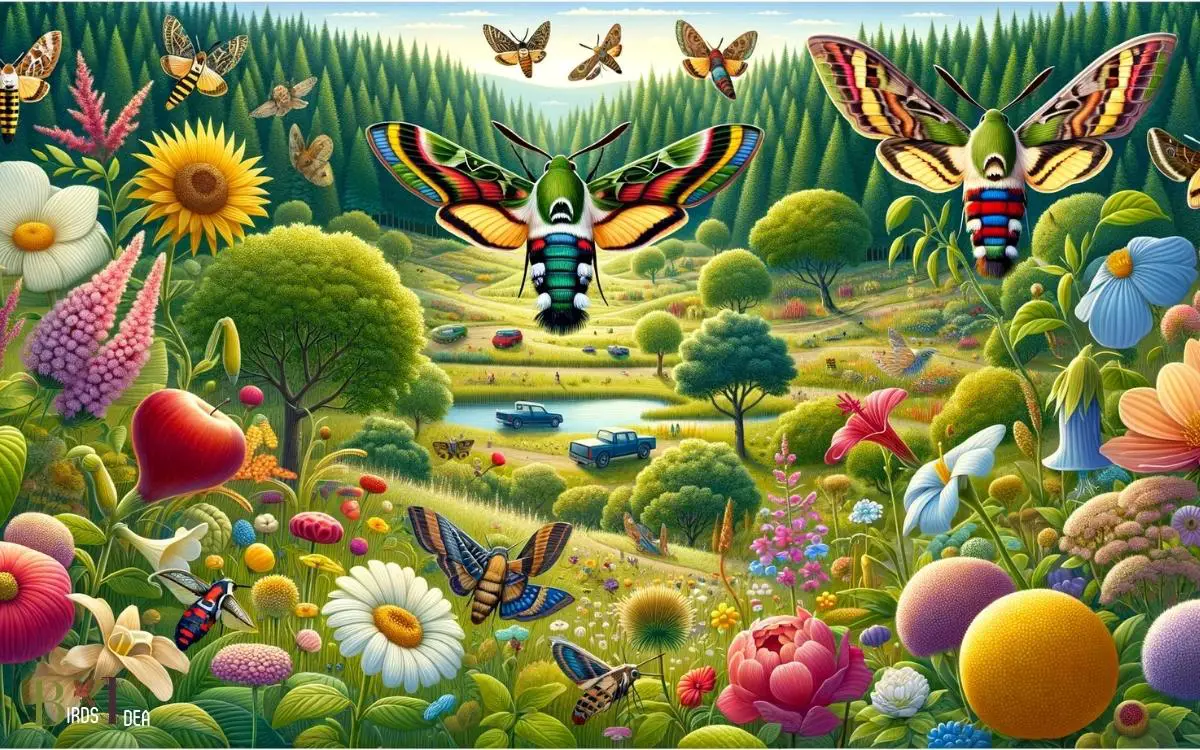
Key Takeaway
Meadows and Grasslands
Hummingbird moths prefer meadows and grasslands for their habitat. These open spaces provide them with an abundance of nectar-rich flowers, which are essential for their survival.
Meadows and grasslands offer a diverse range of flowering plants, creating a suitable environment for the moths to feed and reproduce.
The open nature of these habitats also allows the moths to maneuver easily as they forage for nectar.
Additionally, meadows and grasslands provide ample sunlight, which is beneficial for the moths’ thermoregulation, helping them to maintain their body temperature for optimal functioning.
These areas also offer shelter and nesting opportunities for the hummingbird moths. Overall, meadows and grasslands play a crucial role in supporting the life cycle and ecological needs of hummingbird moths.
Gardens and Parks
Do gardens and parks provide suitable environments for hummingbird moths to thrive? These open spaces offer a diverse array of flowering plants, creating ideal habitats for the moths to feed and reproduce.
Gardens, with their carefully tended flowers, and parks, with their natural flora, attract hummingbird moths due to the abundance of nectar-rich blooms.
The moths are particularly drawn to tubular-shaped flowers, such as honeysuckle and bee balm, which are commonly found in gardens and parks.
Additionally, these areas often provide a mix of sunny and shaded spots, offering the moths suitable conditions for both feeding and resting.
With the presence of suitable host plants and the absence of pesticide use in many gardens and parks, these environments can indeed support healthy populations of hummingbird moths.
Forests and Woodlands
Hummingbird moths can be commonly found in forests and woodlands, where they’re attracted to the nectar of various wildflowers and flowering shrubs.
They’re particularly drawn to areas with a diverse range of flowering plants, providing them with ample food sources and suitable habitats.
- Understory Vegetation: Hummingbird moths are often spotted in the understory of forests and woodlands, where they can find an abundance of low-growing flowering plants.
- Diversity of Flora: The presence of a variety of wildflowers and shrubs in the understory is crucial for attracting and sustaining hummingbird moths.
- Shaded Areas: They tend to frequent shaded areas within the forest or woodland, where they can find shelter and cooler temperatures amidst the vegetation.
Urban Areas and Suburbs
The hummingbird moths can be commonly found in urban areas and suburbs, where they are attracted to a variety of cultivated flowers and flowering plants. These areas provide ample nectar sources for the moths, making them ideal habitats.
Here are some common flowers and plants that attract hummingbird moths in urban areas and suburbs:
| Flowers/Plants | Description |
|---|---|
| Bee balm | Red, pink, or purple blooms that attract hummingbird moths |
| Lantana | Colorful flowers that produce abundant nectar |
| Salvia | Tubular flowers that are popular among hummingbird moths |
| Verbena | Clusters of small blooms that provide ample nectar |
| Phlox | Fragrant flowers that draw hummingbird moths |
In urban areas and suburbs, these flowers and plants create a welcoming environment for hummingbird moths.
Transitioning to the subsequent section about ‘wetlands and coastal regions’, these areas also provide unique habitats for these fascinating creatures.
Do Hummingbird Moths Live and Sleep in the Same Locations?
Hummingbird moths are known to sleep in similar locations to where they forage. To discover where hummingbird moths sleep, look for plants with abundant nectar sources. These moths can often be found resting on the undersides of leaves or in dense foliage, providing them with shelter and safety.
Wetlands and Coastal Regions
Hummingbird moths thrive in wetlands and coastal regions, seeking out diverse nectar sources and suitable habitats. These areas provide the ideal environment for these fascinating insects to flourish.
Rich Biodiversity
Wetlands and coastal regions boast a wide variety of flowering plants, offering ample nectar sources for hummingbird moths.
This diverse range of plants ensures a continuous food supply for the moths, supporting their survival and reproduction.
Mild Climate
Coastal regions often have milder climates, creating favorable conditions for hummingbird moths to thrive.
The moderate temperatures and humidity levels in these areas are well-suited for the moths, allowing them to forage and reproduce more effectively.
Abundant Habitats
Wetlands and coastal regions offer a range of habitats, including marshes, estuaries, and coastal dunes, providing ample shelter and breeding grounds for hummingbird moths.
The availability of varied habitats supports the moths at different stages of their life cycle, contributing to their overall population health.
Conclusion
As the sun begins to set, the hummingbird moth emerges from the shadows, ready to embark on its mysterious nightly journey. With delicate wings fluttering in the twilight, it darts from flower to flower, sipping nectar as it goes.
But where will it go next? The answer remains unknown, shrouded in the enigmatic world of the hummingbird moth. Only time will reveal the secrets of its nocturnal wanderings.

